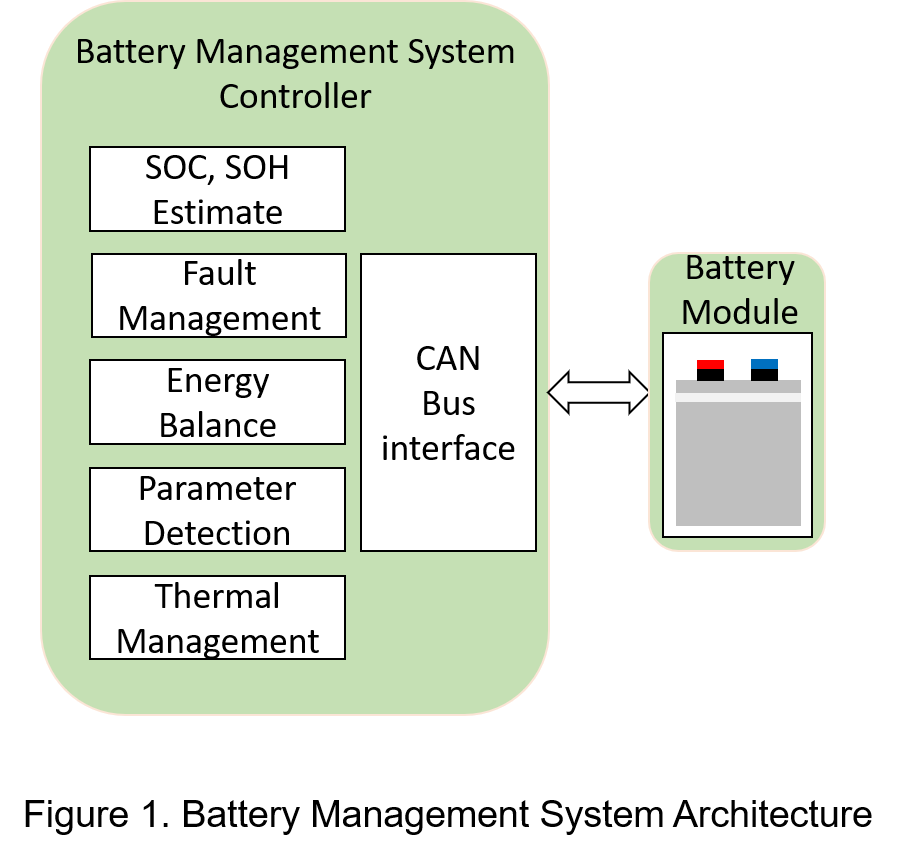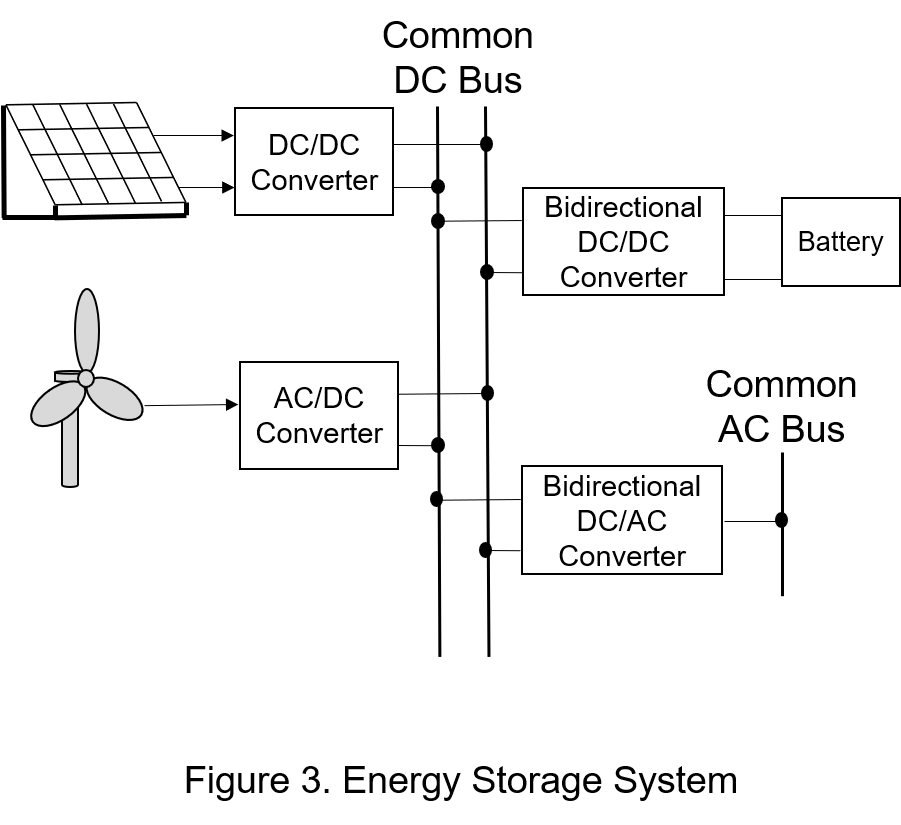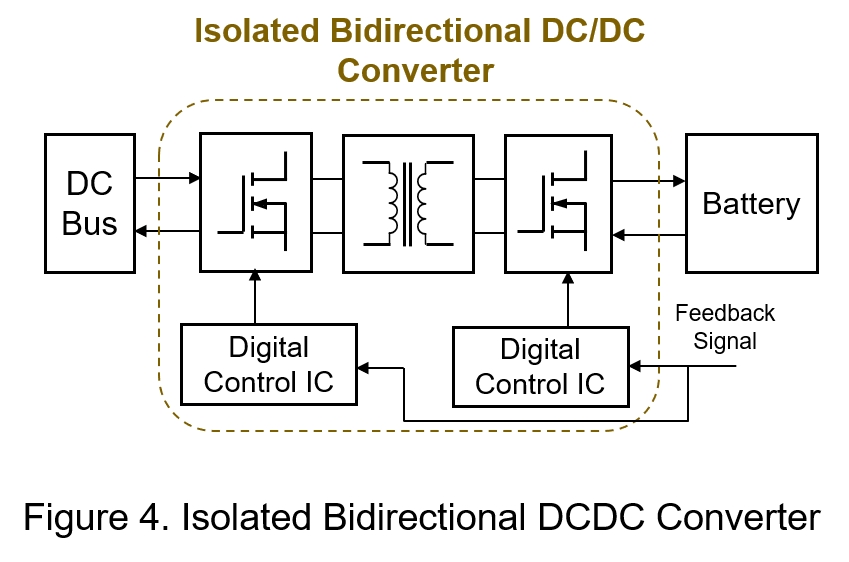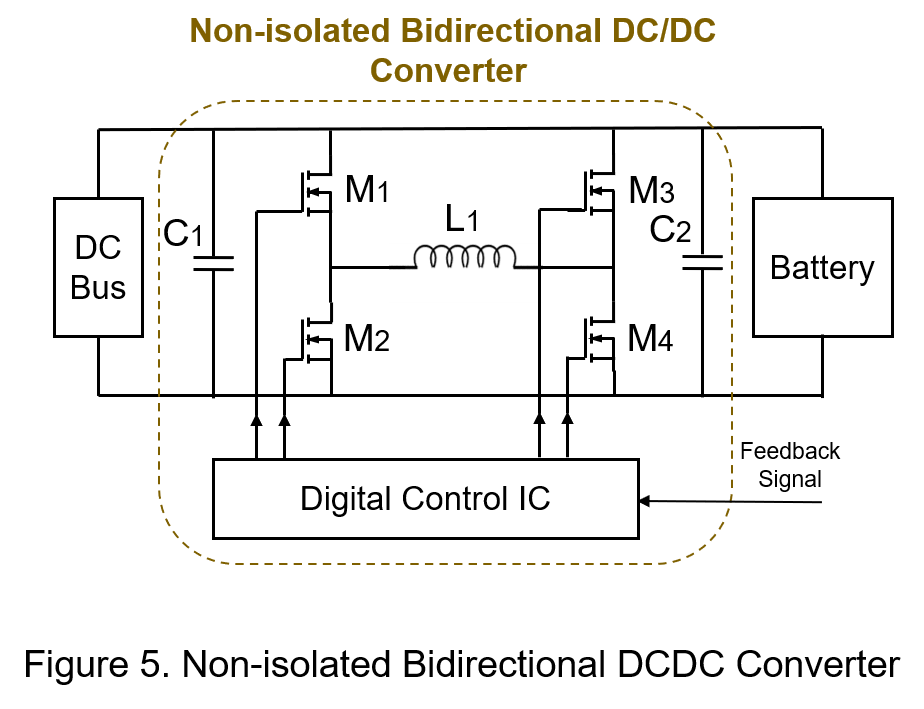You are here
Back to topOverview of Bidirectional Power Converter
Energy efficiency is one of the important topics in power electronics field. As the ratio of renewable energy power continues to increase, the importance of energy storage systems is more obvious. Bidirectional power converters can help to improve the efficiency of power transmission between smart grids and batteries, and gradually reaching the goals of reduction carbon. This article describes the bidirectional power converter architecture in battery-management system and design consideration.
Introduction
Energy policies in future will be aimed at increasing the proportion of renewable energy. In order to achieve a high proportion of renewable energy in smart grid, using battery to store energy, and then integrating renewable energy into the grid is an important role. Battery Management System (BMS) is used to monitor the voltage, current, temperature and other states of the batteries, and to perform leakage current detection, thermal energy management, power balance management, and to evaluate the State of Charge (SOC) and State of Health (SOH), and finally provides CAN bus communication interface, as shown in Figure 1.

Most power management systems need to ensure that output current of each power converter is balanced. In charging and discharging process of power converter, most of them first detect the voltage and current of each point through the Micro Controller Unit (MCU), and then determine whether to charge and discharge or not.
Therefore, bidirectional power converters are used to distribute the output current and avoid over-charging and over-discharging the battery, resulting to reduce battery life. The following will introduce the function and design points of the bidirectional power converter.
Introduction of Bidirectional Power Converter
When high demand of power supply, the bidirectional converter can transfer excess energy back to the grid to achieve the energy distribution function. This is often used in electric energy conversion circuits and energy storage systems, such as renewable energy supplies to electric vehicle batteries. It can be seen that the bidirectional power converter knows charging state of battery through microcontroller. Microcontroller can detect the voltage level for each battery, when it's detected that the battery module is fully charged or the module voltage is higher than other module, microcontroller will send the control signal to bidirectional power converter, and discharged the energy back to auxilary system, which can charge auxiliary battery or other battery modules, and then charged in constant-voltage mode. The low-voltage battery module and the high-voltage battery module can charge and discharge each other in order to achieve high efficiency and energy conservation.

For hybrid electric vehicle (HEV) and battery electric vehicle (BEV) system architecture, the 48V/12V bidirectional power converter can provide 12V and 48V dual voltage output. Using 48V power supply to the heavy-loading system, such as air conditioning system or startup system, which can reduce the power loss and design complexity; Using 12V power supply to auxilary system, such as lighting, multimedia audio player.
Renewable energy storage
The unstable single renewable energy source because of weather changes or frequently large loading cannot efficiently power electronic devices. It shows the energy storage system for solar and wind power sources, and stores the harvested electric energy in the DC bus. During the off-peak period, the energy is stored to the battery or the AC power system network through the bidirectional converter because preventing excessive electricity demand.

Most isolated bidirectional power converters are mainly composed of power switches, transformers and digital control ICs. For bidirectional converter design,
it needs to select switches with low parasitic capacitance and low on-resistance in order to reduce output voltage drop, inruch current caused when MOSFET switching.

The non-isolated bidirectional power converter circuit commonly uses typical Buck/Boost converter circuit architecture. The current charging and discharging directions are changed by switching switches,which can supply a regulated DC output from renewable power source delivering output voltage either below or above the regulated value.That is to say, bidirectional switches are used instead of single switch to realize bidirectional energy conversion. Compared with isolated architecture, it can improve conversion efficiency, reduce cost and size.

Conclusion
Due to the universal of renewable energy power generation systems and electric vehicle, bidirectional power converters getting more seriously. It provides bi-directional energy transfer between the grid and the battery for high conversion efficiency. The main architectures of bidirectional power converter are divided into isolated type and non-isolated type, and this article briefly explains how to select bidirectional converter and design considerations.
CTC is service provider for high-end power modules (DC to DC Converter and AC to DC Converter) for critical applications worldwide since 1987. We aim to be business generator and a virtual business unit. CTC is your own team with 35 years of experience for a strong business program from market research, product definition & development, supply chain management and total technical services.
CTC is the only corporation certificated with ISO-9001, IATF-16949, ISO22613(IRIS, AFNOR silver certificate), and ESD/ANSI-2020. We can 100% ensure not only the product, but also our workflow and service to match quality management system for every high-end application from the very beginning. From design to manufacturing and technical support, every single detail is operated under highest standard.

